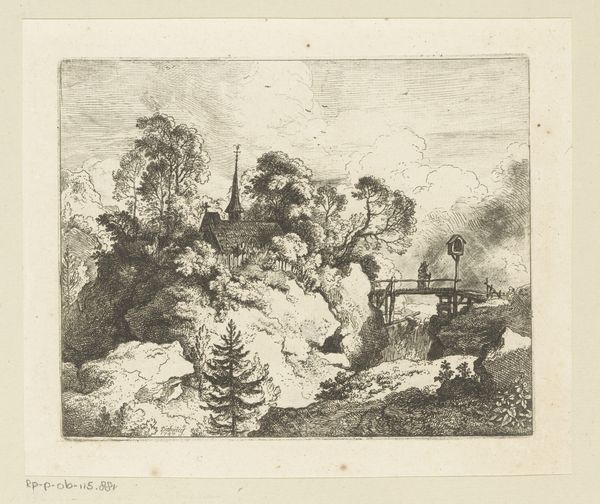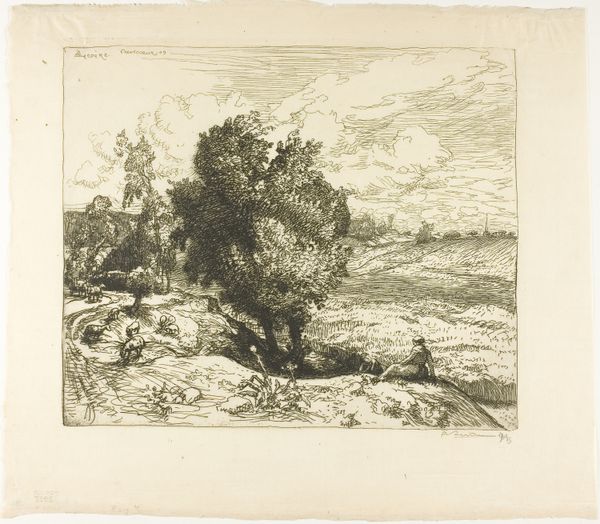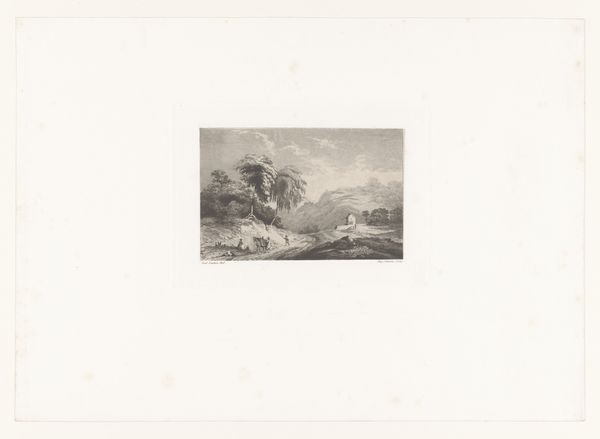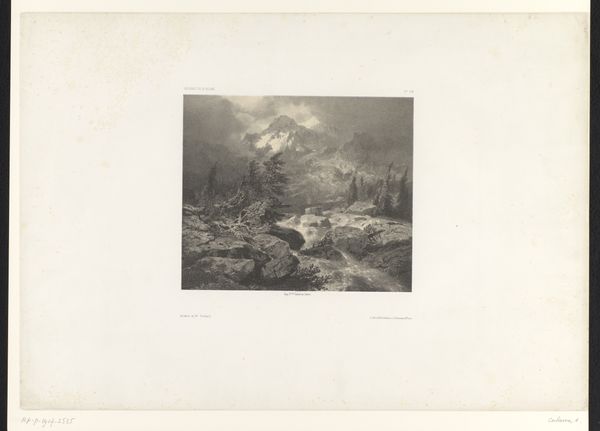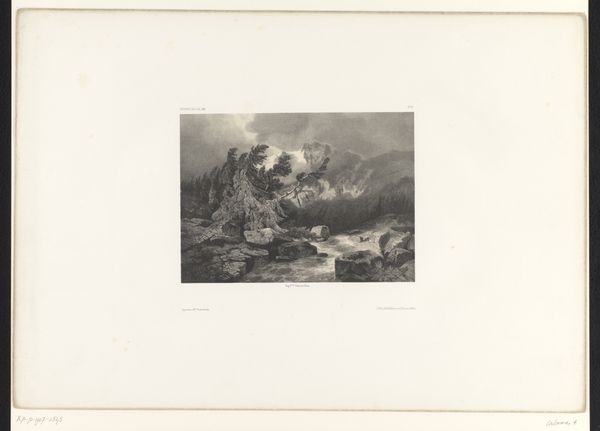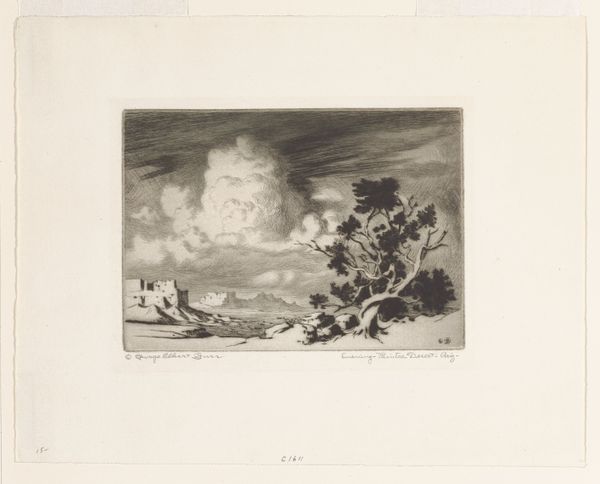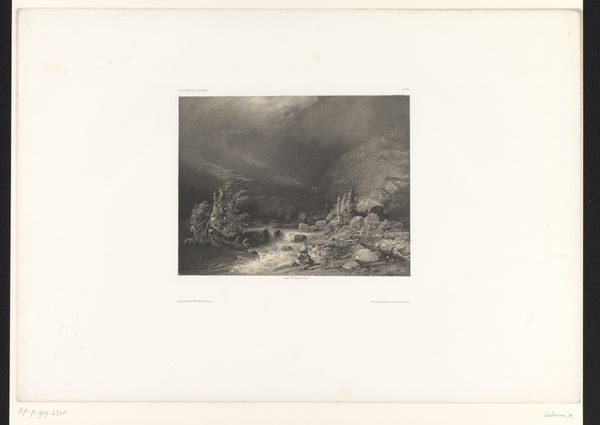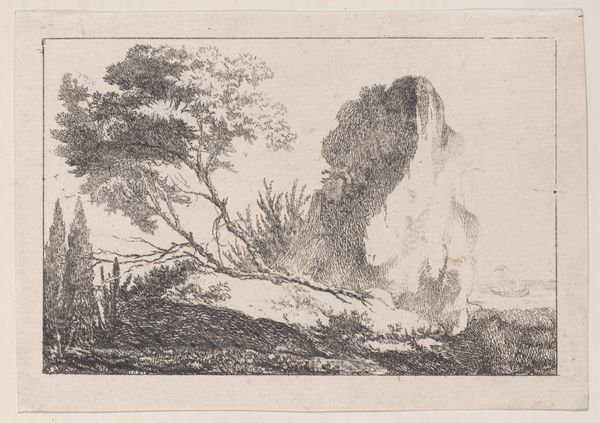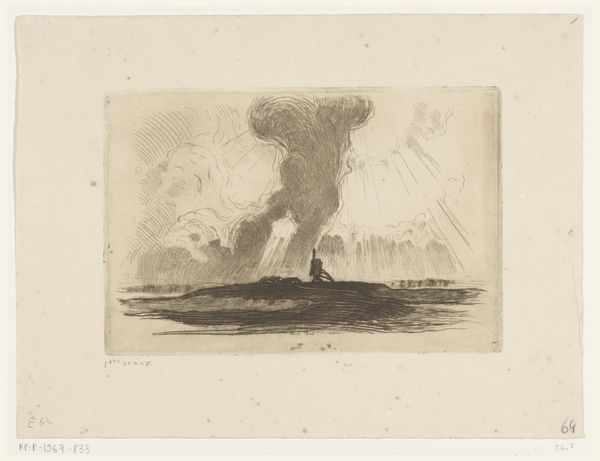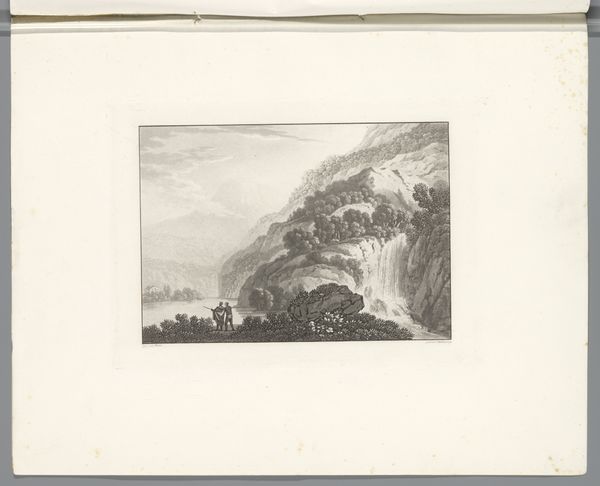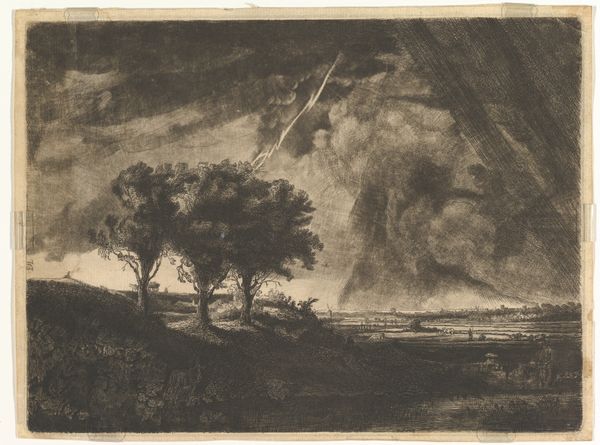
drawing, etching, pencil
#
drawing
#
baroque
#
etching
#
pencil sketch
#
landscape
#
etching
#
pencil
Dimensions: height 152 mm, width 231 mm
Copyright: Rijks Museum: Open Domain
Curator: Looking at this, I’m immediately transported. There’s something incredibly evocative about the atmospheric perspective in this landscape. Editor: Indeed. Before us hangs "Bergachtig landschap," or "Mountainous Landscape," attributed to Jan Hackaert, created sometime between 1639 and 1700. The artwork is an etching, drawing in pencil, that can be found in the Rijksmuseum collection. The details almost emerge from the light. It is a drawing about drawing. Curator: Absolutely, the etching technique creates such a captivating dance of light and shadow, doesn't it? For me, it evokes a sense of exploration, perhaps even a bit of romantic solitude. The traveler and his guides almost swallowed up in the light and shadow, like figures from a dream. Do you notice any symbolic motifs that resonate with Hackaert's historical period? Editor: Well, the horse rider is the symbol, wouldn't you say? Horse riders populate classical scenes as much as Baroque ones, from paintings to tapestries. But notice the figures themselves are indistinct from their mounts, more an impressionistic smudge than people on a road. It lends it an eternal quality: there were horse riders then, and horse riders today. One leads into the other in a kind of circularity. Hackaert is interested in movement and permanence both. Curator: That's fascinating—connecting the historical rider with their modern counterpart. It creates an interesting layer, contrasting our need for speed with the cyclical, natural passage of time. Hackaert really encourages one to meditate on the layers of representation within representation! The eye circles from the small rider to the broad misty background, back again. What might it tell us about Hackaert’s understanding of human nature? Editor: Hackaert is proposing our littleness. This natural grandeur shrinks humanity, yet emphasizes its movement, it desire to progress across landscapes as an exercise of the will. He shows us how fleeting we are in contrast with these old vistas and towering forests. Curator: Wonderful point. His perspective pushes the eye toward some fundamental questions. The figures could be on a quest or fleeing something… It mirrors how our interpretations and symbols evolve across different eras. This has been wonderful; I look forward to our next visit to the collection. Editor: Indeed. As we wander, let us always consider how our own journeys intertwine with those ancient paths laid before us.
Comments
No comments
Be the first to comment and join the conversation on the ultimate creative platform.
